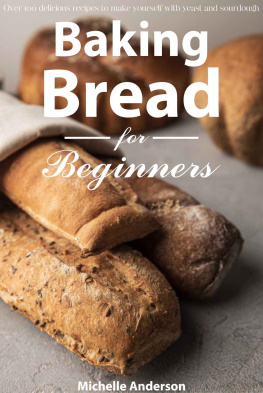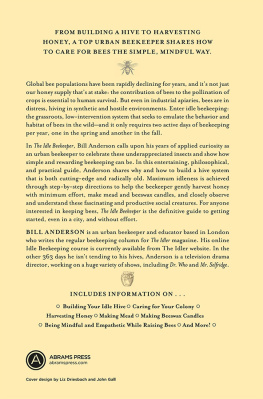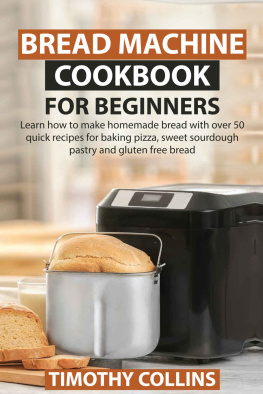The history of bread baking
Statistically speaking, every German eats one roll and four slices of bread a day, which is hardly surprising for a bread country like Germany. In hardly any other country is the number of types of bread so numerous. However, it should not be forgotten that baked grain is one of the most important staple foods in almost every country in the world.
Bread is one of the oldest foods around the world. After people settled down, they first ate cereals mixed with water as porridge, but soon afterwards as flat cakes baked on hot stones and finally as soft bread. This was known with certainty about 5000 years ago, as shown by grave finds in Egypt. Ancient myths, fairy tales and stories show us how important bread was for human nutrition. It appears in one version of the famous Gilgamesh epic, which was written in Babylonia about 4,000 years ago. Gilgamesh, a ruler as mythical as he was historically documented, was so proud and power-obsessed that the gods created Engidu. This being was as strong as the king and should teach him a proper lesson. But Engidu lived with the animals in the wilderness until a woman took care of him and handed him bread and wine with the words: "Eat the bread, Engidu, it is part of life". Thanks to the food, the being was tamed, and finally Gilgamesh's companion and friend. We also encounter bread in the Bible when Yahweh commands the Jews to take only unleavened bread with them when they leave Egypt. The matzo bread, the recipe of which you will also find in this book, is now a typical meal of the Jews for the Passover festival and is intended to remind of this story. In general, bread played a major role in the establishment and maintenance of empires. For example, Roman legionaries did not get dried meat as food, but a certain amount of bread grain. The rulers have always kept the people tied up with grain and bread: distributing bread and games, panem et circensis, was a recognized means of Roman domestic politics. Marie Antoinette's saying about the starving people in Paris in 1789 has also become famous: "If you have no bread, you should eat cake". Well, the consequence of this was the legendary storm on the Bastille, which gave the starting signal for the French Revolution and made the naive nobleman a head shorter. Bread jobs were a particularly profitable craft for centuries: Milling in particular made a lot of profit because the number of mills was limited. They belonged to the technically particularly complex and therefore expensive facilities that for a long time could only be maintained by wealthy landlords. The bakery as a trade, on the other hand, has been proven to have existed for around 4000 years, it is significantly older than the milling industry. In ancient Egypt, bakers - who also ground the grain - were respected and wealthy people. It was they who discovered the principle of leaven as a leavening agent. We still use sourdough with an almost unchanged recipe - thousands of years later.
Tips & tricks and typical mistakes - this is how bread baking works
What a heavenly scent that wafts through the kitchen while bread is being baked! Your mouth is already watering and you, the baker, are looking forward to the first, still warm slice fresh from the oven ... the greater the disappointment if you have stuck to the recipe with the bread, visually and tastefully a disappointment is. As a rule, this is not due to the recipe (although there are many questionable bread recipes on the internet), but to baking errors or unsuitable ingredients. The most common sources of error can be found in the following list - plus tips and tricks on what to watch out for when baking. 1. Temperature If the bread does not rise properly despite the addition of yeast or sourdough, it is probably too cold for it. Especially when preparing a yeast dough, all ingredients should be at the same temperature, with room temperatures between 20 and 22 degrees Celsius being optimal. So don't get the milk and butter out of the fridge when you are mixing it, but hours beforehand - or warm these ingredients in a saucepan. However, they should only be warm and under no circumstances hot, otherwise the yeast culture will die.
Tip: A baking or kitchen thermometer will help you to keep an eye on the optimal temperature. 2. Ingredients Make sure that the ingredients used are of high quality - bread will not be good with old yeast and old flour. Most people like bread with fresh yeast, but it should really be fresh: A cube like this will last a maximum of a week in the refrigerated shelf, then the yeast will lose its driving force. Dry yeast is therefore better suited for storage, even if it is not so tasty in terms of taste. Tip: As a rule of thumb, two packets of 7 grams of dry yeast replace one cube of fresh yeast. Kneading Proper kneading is decisive for the success of a bread: You can only use the kneading hook of the hand mixer for yeast and sourdough bread to mix the ingredients, but should then knead by hand or use a kneading machine. The times given in the recipes must also be adhered to, as kneading too briefly means that the bread does not rise properly and becomes firm and clunky. At best, knead each bread dough for about 20 minutes according to this pattern:
- Put lumps of dough on a floured work surface - press firmly into the dough with your fist - now pull it with both hands - and finally press down again. You need strength to knead, which is why you should always work the dough with the ball of your hand and work it a little bit Be allowed to treat them "brutally". Tip: Be sure to follow the quantities in the recipe and don't be tempted to make a supposedly sticky dough drier when kneading with flour. This disturbs the balance between flour and liquid - and the bread later becomes dry and hard. Usually the stickiness is lost after long kneading. 4. Resting the dough Good things take time, especially when baking bread. Sourdough breads in particular often take hours or even days to rise properly. The times given in the recipes should be strictly adhered to, otherwise the dough will not rise or will collapse quickly. Have patience, you will be rewarded with a wonderfully aromatic and fluffy bread. Tip: Yeast bread in particular needs warmth to rise. Always cover the dough with a clean cloth and place the bowl in a warm place, for example in an oven set to 35 or 50 degrees. However, make sure that the surface of the dough does not dry out. After the dough has rested, knead again! 5. Baking Even if you have done everything correctly up to this point, many things can still go wrong when baking bread - even if you adhere to the specified temperatures and cooking times. This is simply because every oven is different - and for example does not reach the set temperature, heats irregularly or otherwise reacts differently than the oven of the recipe creator. So you have to get to know your oven, experiment a little if necessary, and try out which cooking times and temperatures might work better for you. However, you should always pay attention to these points when baking bread: Always preheat the oven to the specified temperature for at least half an hour to an hour - if possible, bake bread with top / bottom heat and NOT with convection! Unless otherwise stated in the recipe. - Under no circumstances should you open the oven door during baking, as this will disrupt the cooking process and the bread will later collapse and lose its looseness. - For a nice crust, always place a fireproof container with water on the bottom of the oven - otherwise the bread will often get too hard. Tip: You can make bread baking easier by buying a bread maker (available from Amazon, for example). Here you only have to fill in the ingredients, set the required time and the machine does the rest for you automatically.













